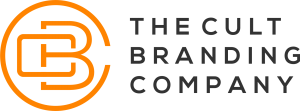I’ve spent years helping brands build communities.
And I’ve seen time and again that the brands winning today aren’t the loudest—they’re the ones that become part of culture.
One of the most powerful recent examples I came across didn’t involve a real spokesperson or influencer..
It involved an entirely fictional character from a Brazilian soap opera.
Yes, fictional.
Here’s what happened: A leading electric vehicle company, BYD, launched a national campaign in Brazil by embedding itself directly into a primetime telenovela. The brand hired a character—an imaginary chief creative officer—who developed in-show commercials for the brand. What made it remarkable is that those ads weren’t just part of the storyline—they were brought to life across real-world channels: TV, social media, retail displays, and even a major Brazilian variety show.
And it worked.
The campaign led to a 62.3% increase in sales, a 23.6x return on ad spend, and a 45% jump in in-store visits.
I don’t share this to suggest you need to find the next soap opera to feature your brand.
I share it because it illustrates a much deeper truth that every executive should understand:
Culture is the Gateway to Relevance
In Brazil, telenovelas aren’t just shows—they’re rituals. They’re part of the social fabric. The brand didn’t just advertise—it entered the story people were already telling themselves. That’s the kind of relevance money can’t buy.
Emotion Beats Promotion
The campaign didn’t lead with features or benefits. It led with a narrative. It made people feel something. When you strike the right emotional chord, people don’t just remember your brand—they welcome it into their lives.
Entertainment Is the Most Effective Advertising
Let’s be honest—most advertising today gets ignored. People scroll past it, skip it, block it. But give them something they want to watch, and they’ll lean in. That’s not a trend—it’s human nature.
Fiction Can Create Real Impact
It might seem odd to bet on a fictional spokesperson. But here’s the thing: meaning matters more than medium. The character symbolized creativity, hope, and progress—and that’s what the audience connected with.
Here’s my takeaway: People don’t talk about products. They talk about stories. And the brands that understand this—who participate in culture instead of trying to interrupt it—are the ones that grow.
At The Cult Branding Company, this is what we do. We help brands find their emotional center, build powerful stories, and earn a place in the hearts of their customers.
Because when you become part of the story, everything else follows.
Want to take this further?
I can help translate these insights into your market, your audience, and your brand.
Let’s talk.
P.S. If this resonated with you, don’t miss our latest white paper: Cult. Creative. It features cutting-edge research on building culturally magnetic brands in the age of distraction—plus a curated collection of some of the best TV spots ever made to inspire you and your team. You won’t download a PDF—you’ll view it live, right in Google Slides. Click here and request access to explore the work.
